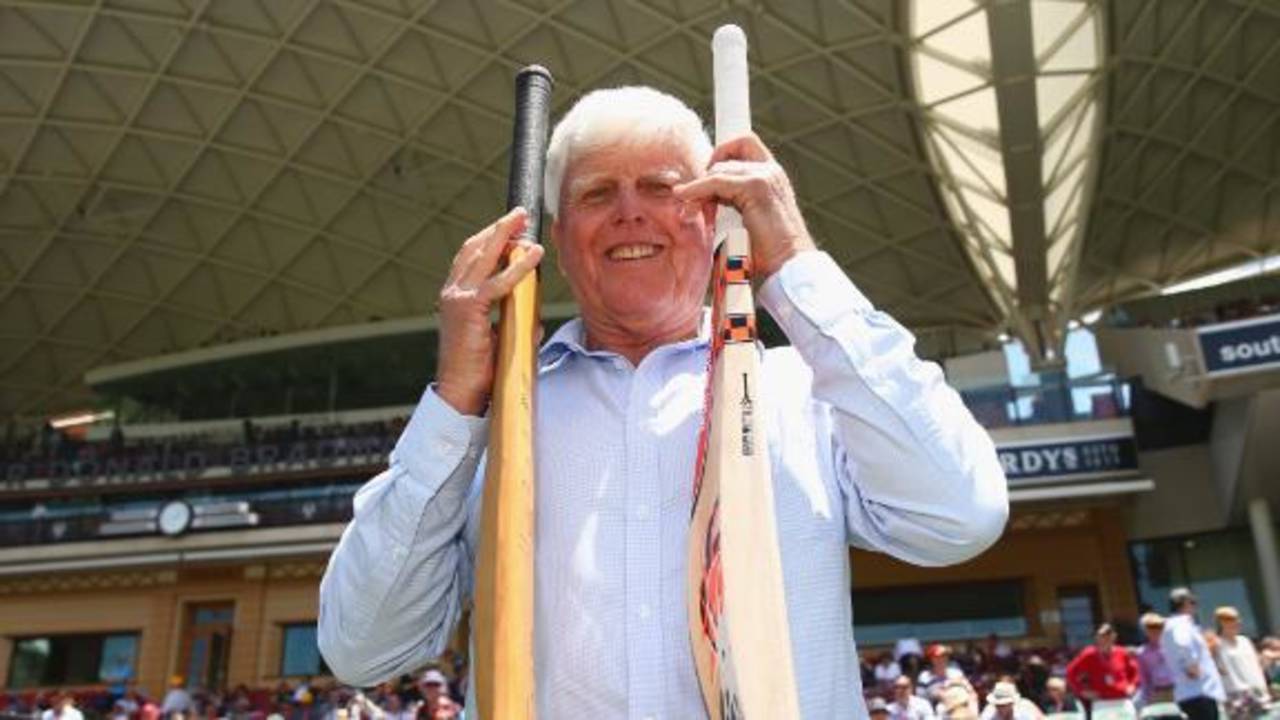MCC moves to limit bat dimensions
The MCC World Cricket Committee has responded to growing concerns about the size of bats by introducing new limits on their dimensions
Sidharth Monga in Mumbai
07-Dec-2016
The MCC World Cricket Committee has responded to growing concerns about the size of bats by proposing new limits on their dimensions, in a bid to reduce the number of mis-hits off the edge or the toe of the bat flying over the boundary for sixes.
The size of bats has been a constant matter of debate at MCC meetings. In July 2014, the cricket committee had discussed the issue at length, debating the benefit of a greater number of boundaries for television viewers against the fairness of the balance between bat and ball. At that point, the members couldn't reach consensus, and the law was left as it was.
Now, however, the committee believes that enough is enough, and has recommended a new limit of 40 millimetres for the edge of the bat, and 67 millimetres to the spine.
"We have talked for the last couple of years about concerns that the committee has had about the size of bats and where the size of bat is going to go in the next five-ten years," Ricky Ponting, a member of the committee, said. "So we have actually come up with some dimensions that we are comfortable with as a committee."
"The time has come to restrict the size of bat edges and the overall width [depth] of bats," Mike Brearley, chairman of the committee, said. "It was pointed out to us that, in 1905, the width of bats was 16mm and that, by 1980, it had increased to 18mm. It is now an average, in professional cricket, of 35-40mm and sometimes up to 60mm. That shows how fast the change has been."
Ponting said the imbalance between bat and ball had been a concern with the committee for a while. He also said some current batsmen were concerned they might now be limited in their strokeplay, but the overwhelming feeling was a need for the restoration of a balance between bat and ball.
"This is being done with consultation with bat manufacturers and also current players," Ponting said. "The current players were surveyed by FICA, and over 60% of current players were also concerned with where the size of cricket bats were going. What we are really conscious of as well is that we don't want to take the game back to the '50s or '60s, we are just worried about where it was going to go.
"So the average player's bat-edge size is between 38 and 42 millimetres. There are exceptions to it, some guys are using bats with edges in excess of 50 millimetres and that is what we are worried about. We are worried about the real extremes of that, and the numbers that we have come about, we are happy with that."

Compare and contrast: Barry Richards' bat from 1970, compared to David Warner's current model•Cricket Australia
The main concern was mis-hits clearing grounds. "When we are talking about changing the size and dimensions of the bat, all we are talking about is the balance between bat and ball and bringing that back," Ponting said. "We feel that in the last few years that it has actually gone a little bit too far in the favour of batsmen, and it is more about mis-hits going for a six. There are top-edges in the game that might travel over fine leg or deep backward square leg, that doesn't have to do anything with the size or the shape of the bat. But more so the mis-hits off the toe or the leading edge of the bat, that are quite clearly still covering the boundaries.
"One thing we know is we can't make the grounds bigger, so certainly one of the concerns was the middle of the bat, because of the shape of the bat is increasingly getting bigger and bigger every year."
Ponting reassured the current players. "We haven't individually spoken - well, I have received a few messages from current players being worried about limiting their equipment," Ponting said. "We are just trying to make the game fairer. The balance between bat and ball a little bit better. Bat manufacturers will tell you now, even with edges of 40mm maximum and 60mm on the back, that players won't notice a huge difference. Some of the mis-hits won't quite go as far but, if you are good enough to hit the ball consistently somewhere near the middle of the bat, with the bats we have got you are going to clear the rope easily.
"Players like Dhoni, Pollard, naturally born strong big hitters, they have got nothing to worry about. It is going to affect guys that are not naturally that strong, that have got away with excessively sized bats, if you like. Those players will notice the difference more than anybody else."
Sidharth Monga is an assistant editor at ESPNcricinfo
